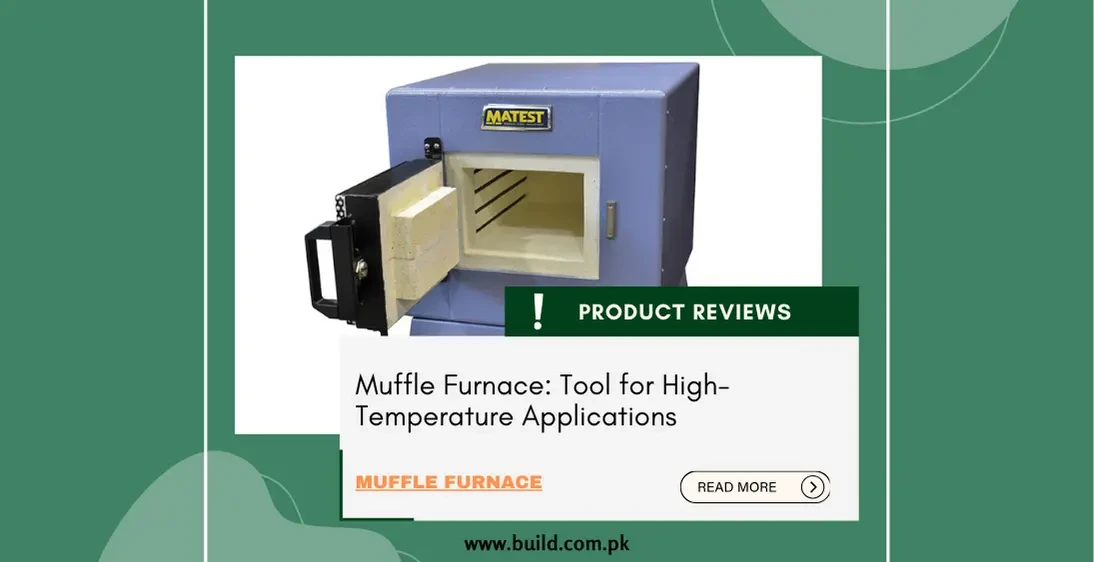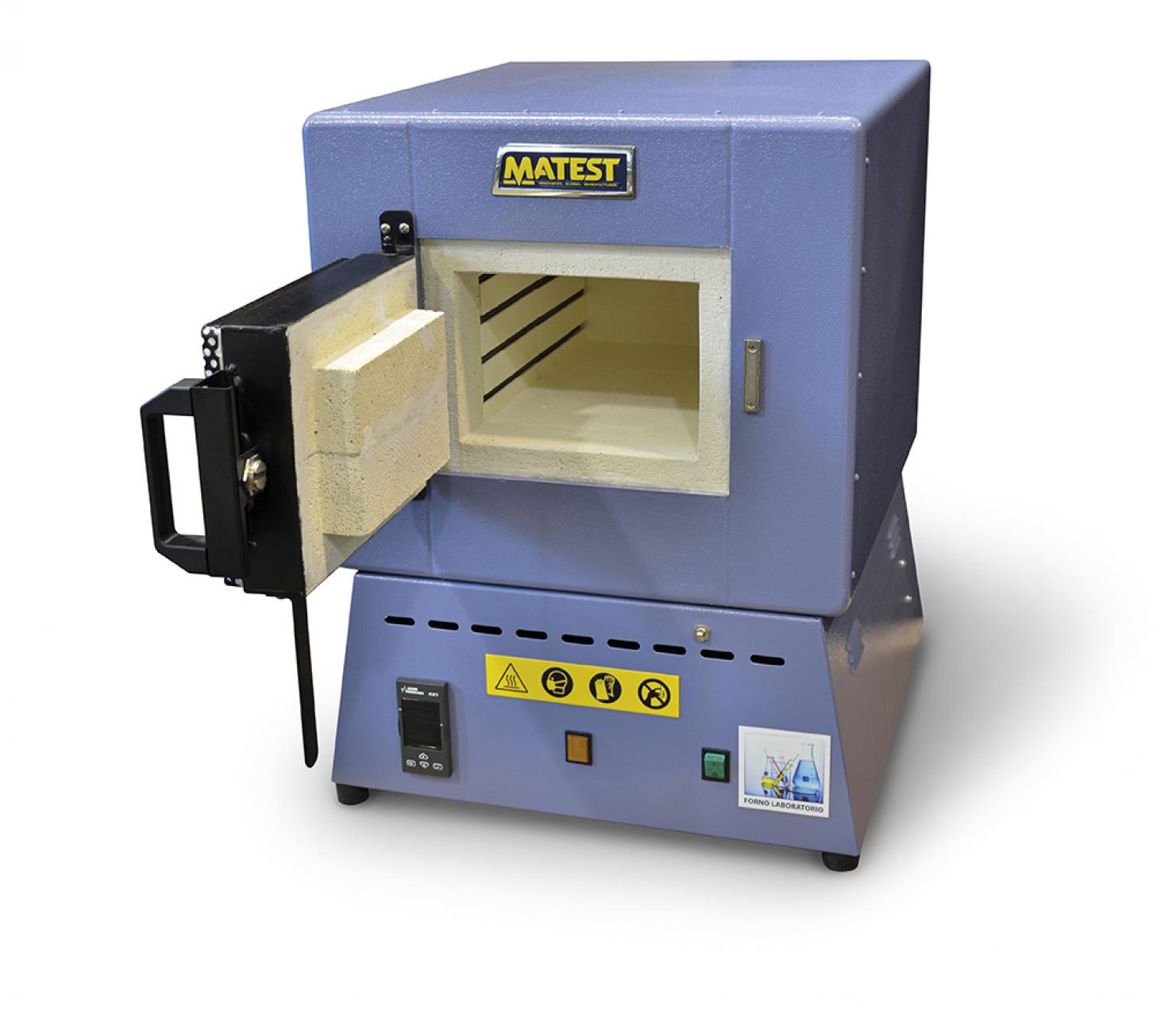Muffle Furnace: Tool for High-Temperature Applications

Introduction:
Muffle furnaces are a
crucial component in laboratories and industrial settings where precise and
high-temperature heating is required. These furnaces provide a controlled
environment for conducting various processes such as heat treatment, material
testing, and thermal analysis. In this comprehensive guide, we will delve into
the definition, working principle, types, applications, benefits, and tips for
choosing and maintaining a muffle furnace.
Understanding the Muffle Furnace:
A muffle furnace is a
high-temperature oven used in laboratories and industrial settings to heat
materials to temperatures up to 1800°C (3272°F). It consists of an insulated
chamber and heating elements that provide uniform heat distribution while
isolating the material from direct contact with the flame or heating elements.
The muffle furnace's
insulated chamber, often referred to as the "muffle," isolates the
material being heated from combustion gases and contaminants, ensuring a clean
and controlled environment. This design is essential for applications that
require precise temperature control and consistency. The furnace typically has
a programmable controller that allows users to set and monitor temperatures
accurately, ensuring repeatable and reliable results.
How Does a Muffle Furnace Work?
Heating Elements:
The
furnace uses heating elements made from materials like silicon carbide,
molybdenum disilicide, or platinum, which can withstand high temperatures.
These elements are placed around the chamber to provide uniform heating.
Insulation:
The chamber is
lined with high-quality refractory materials that provide excellent insulation,
minimizing heat loss and ensuring energy efficiency. Common insulation
materials include ceramic fiber and alumina-silicate.
Temperature Control:
A programmable
digital controller regulates the temperature within the chamber. Users can set
desired temperatures, ramp rates, and hold times, allowing for precise control
over the heating process. The controller typically includes safety features
such as over-temperature protection to prevent damage to the furnace and
materials.
Ventilation:
Some muffle
furnaces have built-in ventilation systems to remove gases and vapors generated
during the heating process. This feature is crucial for applications involving
volatile or hazardous materials.

Types of Muffle Furnaces
Box Muffle Furnaces:
Box muffle furnaces have a
rectangular or square chamber and are commonly used in laboratories for general
heating applications.
These furnaces are
versatile and can handle a wide range of materials and processes. They are
ideal for tasks such as ashing, sintering, and annealing. The compact design
and efficient insulation make them suitable for small to medium-sized samples.
Box muffle furnaces often feature multiple shelves or trays, allowing for the
simultaneous heating of several samples.
Tube Muffle Furnaces:
Tube muffle furnaces have a
cylindrical chamber and are used for applications that require a controlled
atmosphere, such as gas flow or vacuum conditions.
These furnaces are
particularly useful for processes like calcination, reduction, and pyrolysis,
where a specific gas environment is necessary. The tube design allows for the
introduction of gases directly into the chamber, providing a controlled
atmosphere. Tube muffle furnaces are often used in material science research,
metallurgy, and semiconductor manufacturing. They can be configured with single
or multiple zones, enabling precise temperature gradients along the length of
the tube.
Crucible Muffle Furnaces:
Crucible muffle furnaces
are designed for melting and alloying metals. They feature a chamber that can
accommodate crucibles of various sizes.
These furnaces are
essential in metallurgical applications where melting and alloying of metals
are required. The muffle design ensures that the molten metal is isolated from
contaminants, resulting in high-purity results. Crucible muffle furnaces can
reach extremely high temperatures, making them suitable for melting metals like
platinum, gold, and high-grade alloys. The robust construction and high-quality
insulation materials ensure durability and efficiency in demanding
applications.
Applications of Muffle Furnaces
Material Testing and Analysis:
Muffle furnaces are widely
used in material testing and analysis, including thermal analysis, ash content
determination, and loss on ignition (LOI) tests.
In material testing,
precise temperature control and a contamination-free environment are crucial.
Muffle furnaces provide consistent heating conditions, allowing for accurate
determination of material properties. For instance, in thermal analysis, muffle
furnaces are used to study the thermal stability, decomposition, and phase
transitions of materials. In ash content determination, they help measure the
inorganic residue left after combustion, providing insights into the
composition of materials.
Heat Treatment:
Muffle furnaces are used
for various heat treatment processes, such as annealing, tempering, and
sintering.
Heat treatment involves
heating materials to specific temperatures and then cooling them at controlled
rates to alter their physical and mechanical properties. Muffle furnaces offer
the precise temperature control necessary for these processes. In annealing,
the furnace heats metals to soften them and improve ductility. Tempering
involves heating hardened metals to reduce brittleness and enhance toughness.
Sintering is a process used to compact and form solid materials by heating
powdered materials just below their melting point. The muffle furnace's ability
to maintain uniform temperatures ensures consistent and reliable heat treatment
results.
Chemical Processing:
In chemical laboratories,
muffle furnaces are used for processes such as calcination, pyrolysis, and
combustion.
Calcination involves
heating materials to high temperatures in the absence of air or in a controlled
atmosphere to induce thermal decomposition. Pyrolysis is the thermal
decomposition of materials at elevated temperatures in an inert atmosphere.
Combustion processes in muffle furnaces are used for analyzing the combustion
characteristics of materials and determining their elemental composition. The
clean and controlled environment provided by muffle furnaces ensures accurate
and reproducible results in chemical processing applications.
Environmental Testing:
Environmental testing
laboratories use muffle furnaces for analyzing soil, sludge, and waste samples
to determine their composition and contaminants.
Muffle furnaces are essential
for environmental testing procedures such as ashing, where organic matter in
samples is burned off to leave behind inorganic residues. This process helps
determine the presence of contaminants and heavy metals in soil, sludge, and
waste samples. The precise temperature control and clean environment of muffle
furnaces ensure reliable and accurate analysis, contributing to environmental
monitoring and regulatory compliance.
Benefits of Using Muffle Furnaces
- Precise Temperature Control: Muffle furnaces offer accurate and consistent temperature control, essential for applications that require precise heating conditions.
- Contamination-Free Environment: The insulated chamber isolates samples from combustion gases and contaminants, ensuring clean and controlled heating.
- Versatility: Muffle furnces can handle a wide range of materials and processes, making them suitable for various applications in laboratories and industrial settings.
- Energy Efficiency: High-quality insulation materials and efficient heating elements minimize heat loss and energy consumption, reducing operational costs.
- Safety Features: Modern
muffle furnaces are equipped with safety features such as over-temperature
protection, programmable controllers, and ventilation systems to ensure safe
operation.
Choosing the Right Muffle Furnace
- Temperature Range: Select a furnace that can reach the required temperatures for your specific applications. Consider the maximum and minimum temperature capabilities.
- Chamber Size: Choose a furnace with a chamber size that accommodates your sample sizes and volumes. Ensure there is enough space for uniform heating.
- Control Options: Look for programmable digital controllers that offer precise temperature settings, ramp rates, and hold times. Advanced models may include touch screens and data logging capabilities.
- Heating Elements: Consider the type of heating elements based on your temperature requirements and the materials you will be heating. Silicon carbide, molybdenum disilicide, and platinum are common options.
- Safety Features: Ensure the furnace has adequate safety features, such as over-temperature protection, automatic shutoff, and ventilation systems to prevent accidents and ensure safe operation.
- Brand and Reliability:
Research reputable brands and read customer reviews to ensure you choose a
reliable and durable furnace. Established brands often provide better customer
support and warranty options.
Maintaining Your Muffle Furnace
- Regular Cleaning: Keep the chamber clean by removing any residues or debris after each use. Use a soft brush or vacuum to clean the interior.
- Inspect Heating Elements: Regularly inspect heating elements for wear and tear. Replace any damaged elements promptly to maintain optimal performance.
- Check Insulation: Inspect the insulation for any cracks or damage. Damaged insulation can lead to heat loss and reduced efficiency.
- Calibrate Temperature Controllers: Periodically calibrate the temperature controllers to ensure accurate readings and temperature settings.
- Ventilation aintenance: Ensure
ventilation systems are clean and functioning correctly to prevent the buildup
of gases and vapors inside the furnace.
Conclusion:
Muffle furnaces are indispensable tools in laboratories and industrial settings, offering precise temperature control and a contamination-free environment for various high-temperature applications. By understanding their working principles, types, and applications, and following best practices for choosing and maintaining them, you can maximize the efficiency and lifespan of your muffle furnace. Whether you’re conducting material testing, heat treatment, chemical processing, or environmental testing, investing in a quality muffle furnace will enhance your capabilities and ensure reliable, accurate results.









